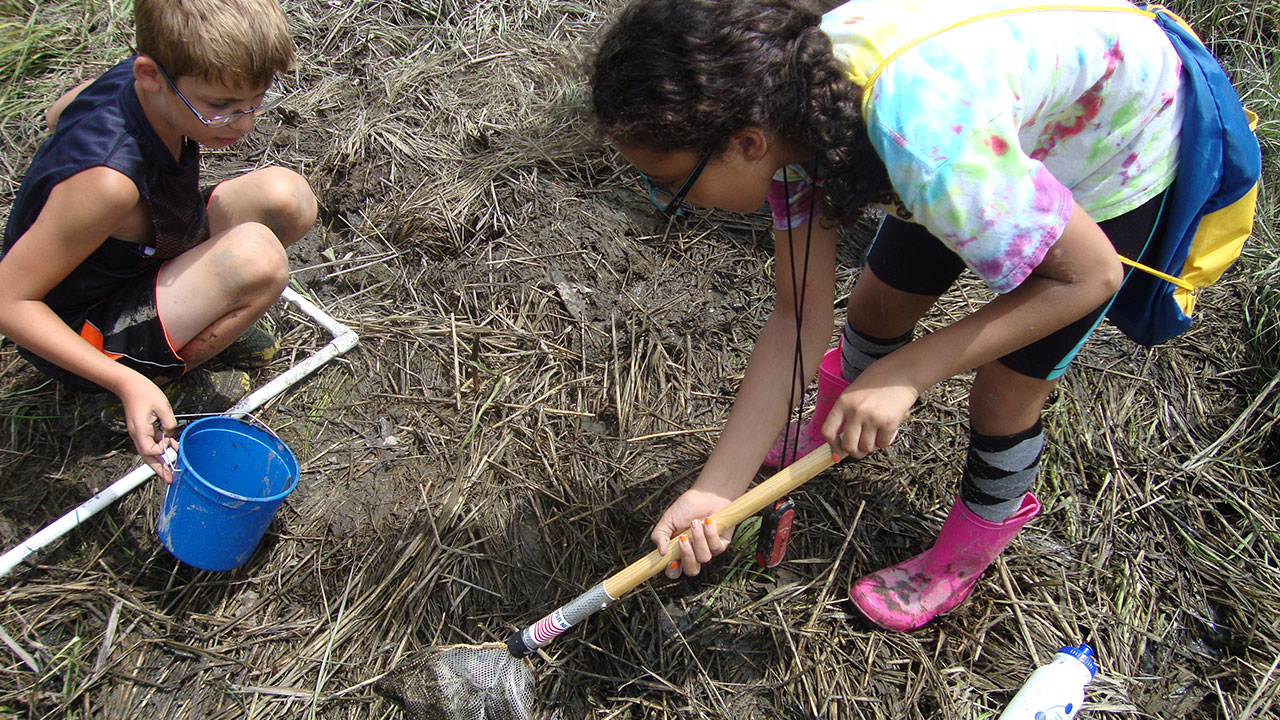[box]From left, students Brian Dirisi of Wallingford’s Dag Hammarskjold Middle School and Ciara Ortiz of Hamden Hall conduct research as part of Quinnipiac University’s Summer Middle-school Opportunity for Research in Environmental Science (SMORES) program.[/box]
Two local residents were among the 17 middle school students who participated in the Summer Middle-school Opportunity for Research in Environmental Science (SMORES) program July 7-11 at Quinnipiac University.
Christopher Hansen of North Haven and Ciara Ortiz of Hamden took part in the SMORES program.
Hosted by the Bristol-Myers Squibb Center for Science Teaching and Learning at Quinnipiac, the QU SMORES program is a commuter program designed for middle school students interested in discovering how research in environmental science takes place and how it relates to science-inquiry based learning that they may experience within their own science classrooms.
The students used instruments to compare animal and plant life on two salt marshes at Farm River State Park in East Haven. They finished their analysis on July 10, and prepared presentations that they delivered on July 11. The students’ data and analysis will be shared with the state.
Lucie Howell, director of the Bristol-Myers Squibb Center for Science Teaching and Learning, supervised the program along with Christopher Newlan, a science teacher at Wooster Middle School in Stratford.
The goals of the program are to expose student participants to science inquiry and research methods in environmental science, give students a hands-on learning experience both within a traditional science laboratory and an environmental living, learning outdoor laboratory and empower student participants by informing them how they can prepare for STEM (science, technology, engineering and math) college programs.
Students studied the hydrology, geology and biology of the marshes as well as atmospheric data. They were asked to compare the marshes, one of which was cut off from the main stem of the river, to see if one marsh was healthier than the other.
“It’s a huge question,” Newlan said. “For most of these students, it’s the first time they have been handed a question that they can’t Google. The program gives the students the opportunity to experience environmental research. I hope they learn that they are very capable of doing science. I’m not so concerned that they remember the facts and the figures or the individual bits and pieces, but that they are able, even at this age, to tackle a program and figure out an answer.”
Howell said the program emphasizes having fun while applying classroom activities to real-world situations.
“One of the things we highlighted this week was that they are the only ones doing this particular work,” Howell added. “That allows them to have ownership. How often is it that a kid stands in a room full of adults where the kids is the expert and the adults are the learners?”
Newlan said the students concluded that the two marshes are different but were left with the question of what should be done next.
“That’s what science does,” he said. “You answer one question and find another.”
